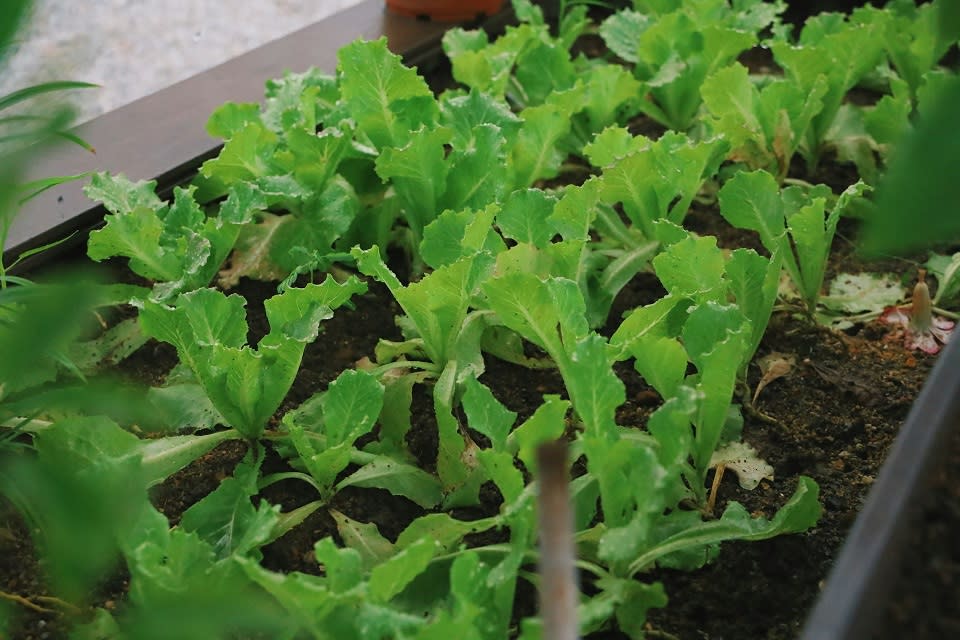Growing green: Vital role of urban agriculture

The majority of people today reside in cities. This trend of urbanisation is accompanied in many developing nations by increased unemployment, environmental pollution, food insecurity, and malnutrition, especially among vulnerable populations like children, expectant women, and nurturing mothers.
Urban agriculture emerges as a viable solution to urban food insecurity issues, which are predicted to worsen as poverty, and the general population in developing countries continue to urbanise. At the same time, urban farming can support local economies, social cohesion, health, and a sustainable environment.
It is used in many farming systems throughout the world, employing between 25 and 30 per cent of urban dwellers in the agro-food industry. Urban agriculture is positioned to become more widely acknowledged for its significant contributions, as both urban population growth and rural-to-urban migration continue. On the other hand, the current ignorance of urban agriculture has hindered the recognition of its importance.
The benefits of urban agriculture for food security are demonstrated by the involvement of 100-200 million urban farmers globally, who provide fresh horticulture produce for metropolitan markets. Given that the majority of urban farmers originate from underprivileged communities and that low-income individuals spend up to 85 per cent of their incomes on food purchases, urban agriculture also plays a positive role in social advancement.
Sociologically speaking, urban farming reduces gender inequality and fosters social inclusion; women make up about 65 per cent of urban farmers. Urban agriculture also improves air quality, decreases the environmental impact of food storage and transportation, increases biodiversity in urban areas, and reduces waste in urban areas. The main advantages of urban agriculture are best illustrated by the production of horticultural products.
The population of Malaysia is expected to rise from approximately 32.6 million in the present to over 36 million by 2030. This means that 77.6 per cent of people live in cities, according to Statista (2021). It is projected that the demand for food supply will rise by 70 per cent to meet the growing needs for food.
As a result, the agriculture industry needs to improve its efficacy and efficiency to meet Malaysian customer demands.
One essential link in the household food supply system is urban agriculture. Urban agriculture is recognised as a sustainable development strategy in Malaysia that may provide food both inside and outside of metropolitan areas.
As of now, Malaysia has about 11,000 urban farming communities. By 2030, the government wants to build 20,000 of these communities across the country.
Urban agriculture guarantees that every household has access to fresh food, which helps to promote food security. It has benefits for the economy, society, and environment.
In Malaysia, the number of people engaged in urban agriculture increased dramatically from 18,687 people in 2019 to 40,219 in 2020. Realising the need of food production, city dwellers have started growing vegetables in their rooftops, balconies, and yards. In nations like Brazil and the US, urban farming is promoted as a way to produce wholesome, fresh food; in Malaysia, its appeal has increased as well.
Urban agriculture is particularly important for sustainable development in Malaysia, especially by 2030, for several reasons:
1. Malaysia aspires to attain food security and minimise reliance on food imports by 2030. Urban agriculture can help achieve this goal by increasing local food production, resulting in a more stable and resilient supply chain.
2. Rising urbanisation puts more pressure on natural resources and ecosystems. Vertical farming, rooftop gardens, and aquaponics are examples of urban agriculture approaches that can help minimise environmental deterioration by lowering land use, conserving water, and increasing biodiversity.
3. Two consequences of climate change to which Malaysia is vulnerable are extreme weather events and sea level rise. Because it can sequester carbon dioxide, cut greenhouse gas emissions associated with food transportation, and increase urban resilience to climate-related shocks, urban agriculture has the potential to mitigate climate change.
4. Non-communicable diseases like diabetes and obesity present challenges for Malaysia. Urban agriculture facilitates the availability of wholesome, fresh food, which enhances public health and lowers medical expenses linked to diet-related ailments.
5. Urban agriculture can help reduce poverty and promote economic development in urban areas by assisting small-scale farmers, entrepreneurs, and food-related businesses. It boosts local economies, generates jobs, and makes food more affordable and accessible for low-income households.
In addition, urban agriculture serves as a teaching tool that encourages sustainable food production practices, healthy eating habits, and environmental stewardship. Engaging in interactive endeavours such as urban farming and gardening helps citizens better understand the connection between food, health, and the environment.
Ultimately, by incorporating urban agriculture into Malaysia's development agenda by 2030, a number of issues can be resolved, such as public health, economic development, food security, community resilience, environmental sustainability, and climate change.
It stands for an all-encompassing strategy for sustainable development that advances the welfare of humanity and the environment.
Dr Rulia Akhtar is a research fellow at the Ungku Aziz Centre for Development Studies, Office of Deputy Vice Chancellor (Research & Innovation),
Universiti Malaya, Malaysia.
The post Growing green: Vital role of urban agriculture appeared first on Twentytwo13.


